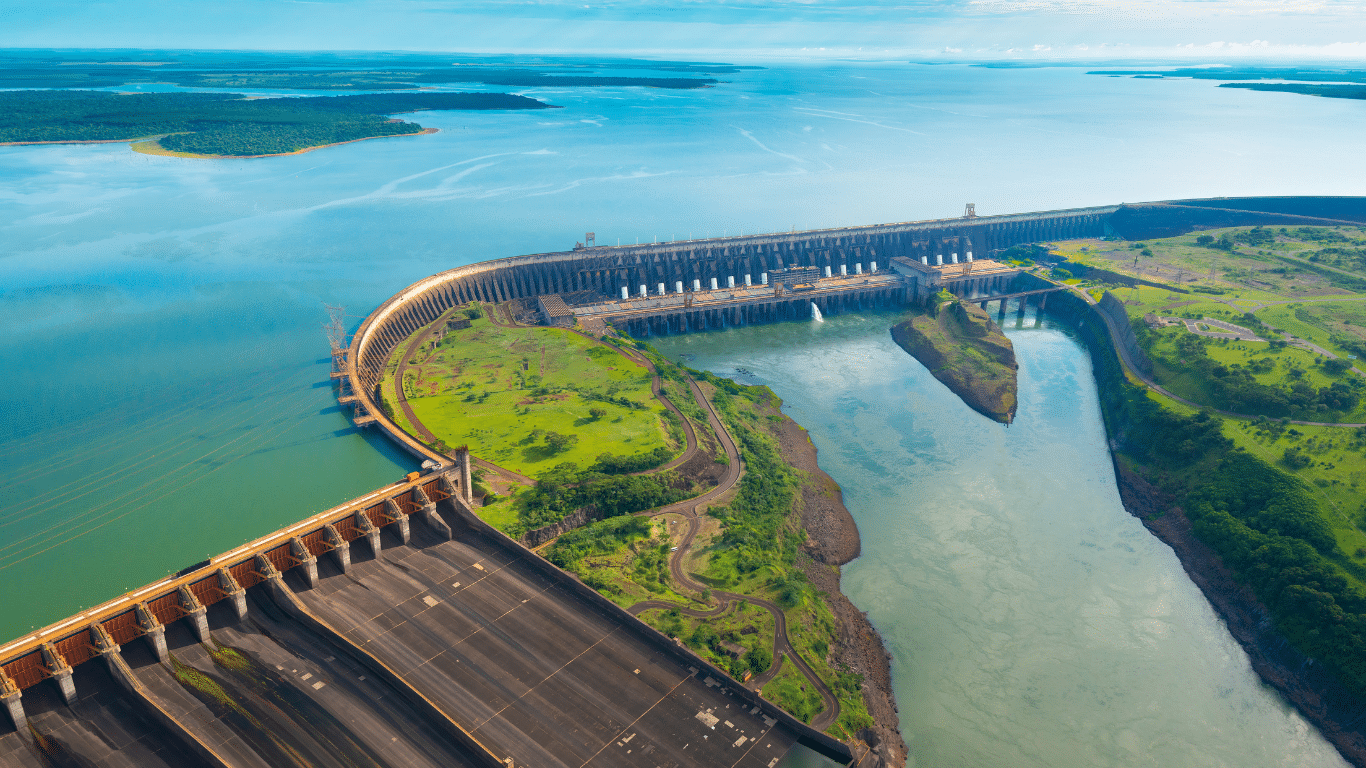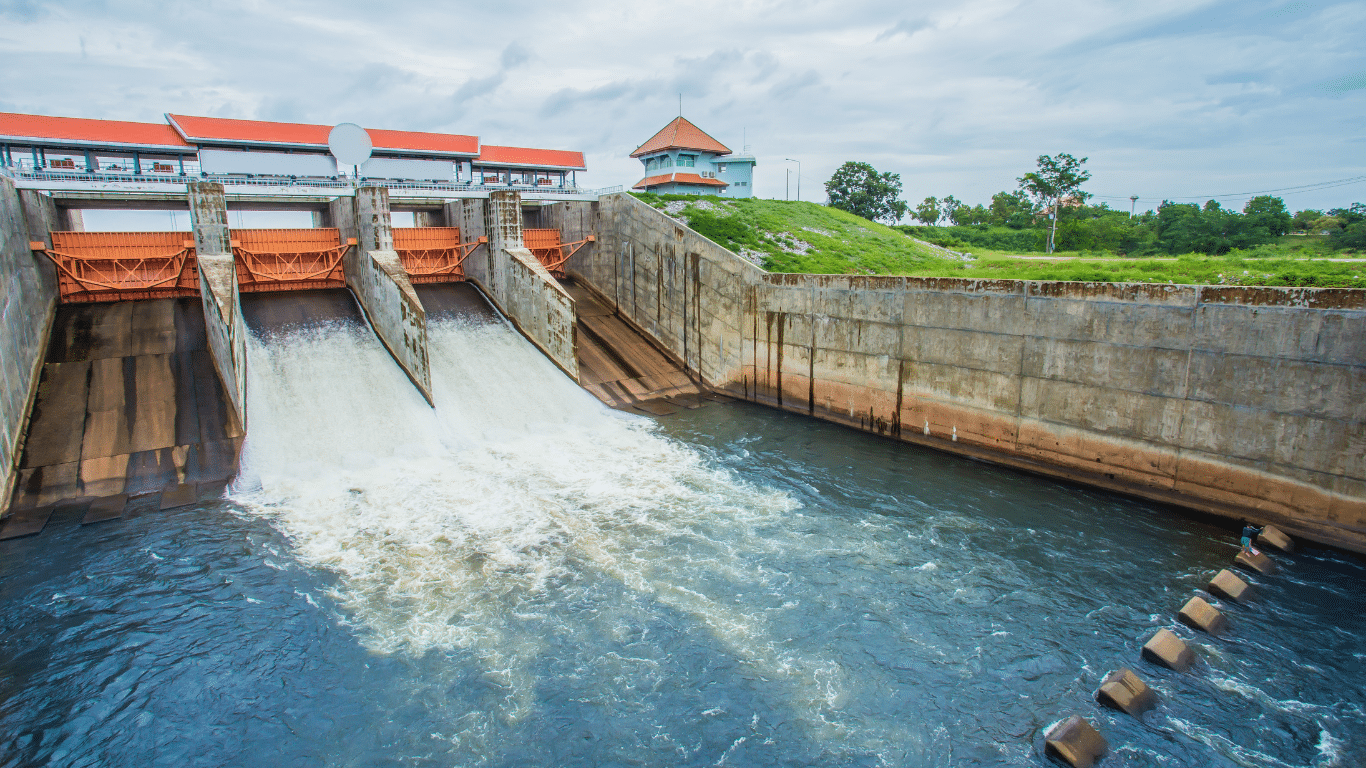Fluid mechanics plays an important role in civil engineering, influencing various aspects of construction and infrastructure. One significant application is in the design and analysis of water supply systems, such as pipelines and water treatment plants. Engineers use fluid mechanics principles to calculate flow rates, and pressure losses, and optimize the distribution of water within these systems. Additionally, fluid mechanics is essential in the design of drainage systems to manage stormwater effectively and prevent flooding.
Understanding how fluids behave allows engineers to design efficient and stable structures like dams, bridges, and culverts that can withstand forces exerted by flowing water. Moreover, fluid mechanics is utilized in the study of soil mechanics, helping engineers understand how water affects soil properties and stability, which is vital in the design of foundations for buildings and other structures. In essence, fluid mechanics serves as a cornerstone in civil engineering, enabling the safe and efficient design of infrastructure to support communities and cities.
Exploring the Application of Fluid Mechanics in Civil Engineering
Civil engineering is a vast field that encompasses the design, construction, and maintenance of infrastructure essential for modern society. From bridges to buildings, roads to dams, civil engineers play a crucial role in shaping our environment. One fundamental aspect of civil engineering is fluid mechanics, the study of how fluids behave and interact with their surroundings. In this article, we will delve into the application of fluid mechanics in civil engineering, exploring its significance and practical implications.
Basics of Fluid Mechanics
Before we delve into its applications, let’s grasp the basics of fluid mechanics. Fluid mechanics deals with fluids, substances that flow and conform to the shape of their container. This branch of physics studies both liquids and gases, examining their behavior under various conditions such as flow, pressure, and temperature.
Fluid mechanics relies on fundamental principles such as the conservation of mass, momentum, and energy. These principles help engineers analyze and predict the behavior of fluids in real-world scenarios. By understanding how fluids move and interact, civil engineers can design efficient, safe, and sustainable structures.
Application in Hydraulic Structures
One of the primary applications of fluid mechanics in civil engineering is in the design and analysis of hydraulic structures. Hydraulic structures are engineering works that manage water flow, such as dams, channels, and irrigation systems. Fluid mechanics principles are crucial for optimizing the performance and safety of these structures.
For example, when designing a dam, engineers use fluid mechanics to calculate the forces exerted by water against the dam wall. By analyzing fluid flow patterns and pressure distributions, engineers can ensure that the dam is stable and can withstand various hydraulic conditions, such as floods or droughts.
Similarly, in irrigation systems, fluid mechanics helps engineers design efficient networks of channels and pipes to distribute water to agricultural fields. By understanding how water flows through these systems, engineers can minimize energy loss and ensure adequate water supply to crops.
Application in Environmental Engineering
Fluid mechanics also plays a vital role in environmental engineering, particularly in the study of water and air pollution. Engineers use fluid mechanics principles to model the dispersion of pollutants in water bodies and the atmosphere, helping to assess and mitigate environmental impacts.
For instance, in wastewater treatment plants, fluid mechanics is employed to design processes for removing contaminants from water. By studying fluid flow and mixing patterns, engineers can optimize the efficiency of treatment systems, ensuring that pollutants are effectively removed before discharge into the environment.
Similarly, in air quality management, fluid mechanics helps engineers model the dispersion of pollutants emitted from sources such as factories and vehicles. By understanding atmospheric flow patterns and turbulence, engineers can predict the spread of pollutants and develop strategies to minimize their impact on human health and the environment.
Application in Structural Engineering
Fluid mechanics also influences the design and analysis of structural systems in civil engineering. For example, when designing tall buildings or bridges, engineers must consider the effects of wind and water currents on the structure’s stability and performance.
Fluid mechanics principles help engineers calculate the forces exerted by wind and water on structures, allowing them to design appropriate structural elements to withstand these loads. By simulating fluid flow around buildings and bridges, engineers can optimize their shape and orientation to minimize wind resistance and reduce the risk of structural failure.
Moreover, in the design of offshore structures such as oil platforms and wind turbines, fluid mechanics is essential for understanding wave dynamics and ocean currents. Engineers use fluid mechanics principles to analyze the structural response to wave loading and ensure the stability and safety of offshore installations.
key points of Application of fluid mechanics in civil engineering
Important applications of fluid mechanics in civil engineering
Fluid mechanics plays a crucial role in civil engineering, influencing various aspects of construction and infrastructure. One significant application is in the design and analysis of water supply systems, such as pipelines and water treatment plants. Engineers use fluid mechanics principles to calculate flow rates, and pressure losses, and optimize the distribution of water within these systems. Additionally, fluid mechanics is essential in the design of drainage systems to manage stormwater effectively and prevent flooding.
Understanding how fluids behave allows engineers to design efficient and stable structures like dams, bridges, and culverts that can withstand the forces exerted by flowing water. Moreover, fluid mechanics is utilized in the study of soil mechanics, helping engineers understand how water affects soil properties and stability, which is vital in the design of foundations for buildings and other structures. In essence, fluid mechanics serves as a cornerstone in civil engineering, enabling the safe and efficient design of infrastructure to support communities and cities.
What is Fluid Mechanics in Civil Engineering?
Fluid mechanics in civil engineering deals with the study of fluids (liquids and gases) and their behavior in relation to civil engineering applications. It involves understanding how fluids move, interact with structures, and affect the environment. This field applies principles from physics and mathematics to analyze and design various systems and structures, such as water supply networks, drainage systems, and hydraulic structures like dams and channels.
Application of Mechanics in Civil Engineering
Mechanics, including fluid mechanics, is fundamental in civil engineering because it helps engineers understand how forces and materials interact within structures and systems. In civil engineering, mechanics is applied in designing safe and efficient structures, analyzing their stability, and predicting their behavior under different conditions. Fluid mechanics specifically focuses on the behavior of fluids and is essential for designing hydraulic structures, managing water resources, and ensuring the stability of infrastructure exposed to fluid forces.
Why Do Civil Engineers Need Fluid Mechanics?
Civil engineers need fluid mechanics to design and analyze various systems and structures that involve the movement and interaction of fluids. Whether it’s designing water supply networks, drainage systems, or hydraulic structures like dams and culverts, understanding fluid behavior is crucial for ensuring the efficiency, safety, and stability of civil engineering projects. Fluid mechanics also helps engineers predict and mitigate risks associated with floods, erosion, and environmental impacts related to fluid flow.
Some Applications of Fluid Mechanics
Fluid mechanics finds applications in a wide range of industries and fields beyond civil engineering. In aerospace engineering, it is used to design aircraft and spacecraft propulsion systems and study aerodynamics. In mechanical engineering, fluid mechanics is applied in designing pumps, turbines, and HVAC systems. It is also essential in environmental engineering for modeling air and water pollution dispersion, as well as in biomedical engineering for understanding blood flow and respiratory systems.
Scope and Applications of Fluid Mechanics
The scope of fluid mechanics extends to various disciplines, including civil engineering, mechanical engineering, aerospace engineering, and environmental engineering. Its applications range from designing hydraulic structures and water distribution networks to analyzing aerodynamics and modeling environmental processes. Fluid mechanics provides the foundation for understanding and solving complex engineering problems related to fluid flow, making it indispensable in a wide range of industries and research fields.
Conclusion
In conclusion, fluid mechanics is a fundamental discipline that finds diverse applications in civil engineering. From the design of hydraulic structures to environmental management and structural engineering, fluid mechanics principles underpin many aspects of modern infrastructure development. By leveraging our understanding of fluid behavior, civil engineers can create safer, more efficient, and more sustainable built environments for future generations. As we continue to face new challenges in urbanization, climate change, and resource scarcity, the application of fluid mechanics will remain essential in addressing these complex engineering problems.
FAQs
What are the key roles of fluid mechanics in civil engineering?
Fluid mechanics plays a crucial role in civil engineering by influencing various aspects of construction and infrastructure, including the design of water supply systems, drainage systems, hydraulic structures, and foundations.
How does fluid mechanics contribute to the design of water supply systems?
Fluid mechanics principles are used to calculate flow rates, pressure losses, and optimize water distribution within water supply systems, ensuring efficient and reliable delivery of water to consumers.
What is the significance of fluid mechanics in drainage system design?
Fluid mechanics helps engineers design effective drainage systems by understanding how fluids flow and interact with structures, preventing flooding and managing stormwater efficiently.
How does fluid mechanics influence the stability of dams and bridges?
Understanding fluid behavior allows engineers to design dams and bridges that can withstand forces exerted by flowing water, ensuring their stability and safety.
Can fluid mechanics help prevent flooding in urban areas?
Yes, fluid mechanics principles are applied in designing drainage systems and stormwater management strategies to prevent flooding in urban areas by efficiently redirecting and controlling the flow of water.
What are some practical applications of fluid mechanics in soil mechanics?
Fluid mechanics helps in understanding how water affects soil properties and stability, crucial for designing foundations and retaining structures that can withstand soil-fluid interactions.
How do civil engineers utilize fluid mechanics in foundation design?
Civil engineers use fluid mechanics principles to analyze soil-water interactions and design foundations that can support structures safely and effectively.
What role does fluid mechanics play in the maintenance of hydraulic structures?
Fluid mechanics is essential for maintaining hydraulic structures like dams, channels, and culverts by ensuring proper flow conditions and addressing erosion and sedimentation issues.
How does fluid mechanics aid in the analysis of environmental impacts on infrastructure?
Fluid mechanics helps in modeling and predicting the environmental impacts of infrastructure projects, such as water pollution dispersion and erosion control measures.
Are there any emerging technologies using fluid mechanics in civil engineering projects?
Yes, emerging technologies like computational fluid dynamics (CFD) are increasingly used in civil engineering projects for more accurate analysis and design of fluid flow-related systems and structures.





